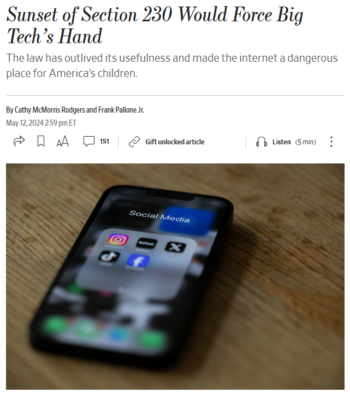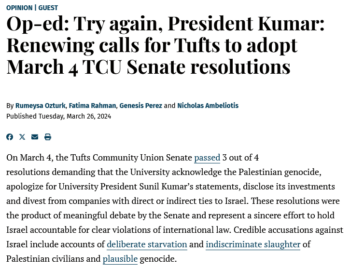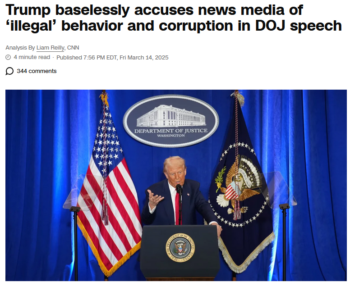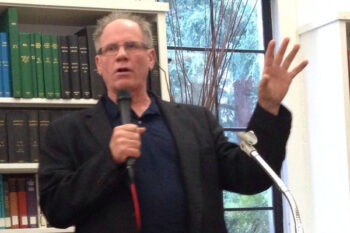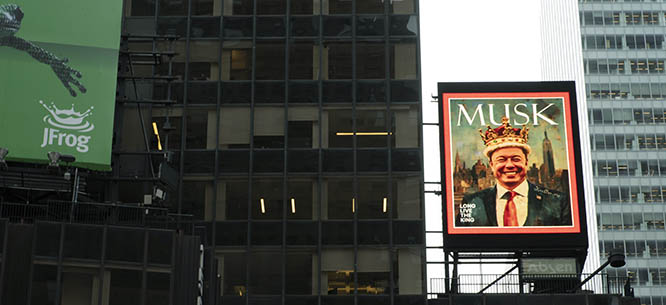Just under four years ago, New York’s third-term governor, Andrew Cuomo, resigned from office in disgrace, forced out by a looming impeachment inquiry led by his own Democratic Party over sexual harassment and Covid mismanagement scandals.
Shockingly, however, Cuomo has entered the New York City mayoral race and catapulted directly into the polling lead, with the help of his widespread name recognition—and some journalists willing to lend a hand to his image rehabilitation campaign. While some local papers have been scathing in their coverage of the ex-governor, the New York Times seems to be largely buying what Cuomo’s selling.
Scandals galore
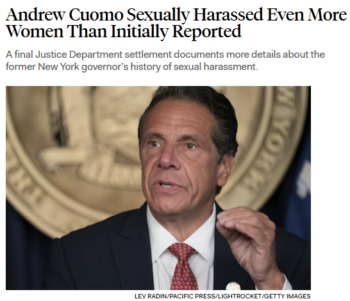
Biden’s Justice Department concluded that “Governor Cuomo repeatedly subjected these female employees to unwelcome, non-consensual sexual contact” (New Republic, 1/26/24).
Cuomo resigned as governor in August 2021, shortly after the release of Attorney General Leticia James’s investigation that concluded that he had sexually harassed at least 11 women, failed to report and investigate sexual harassment claims, and engaged in unlawful retaliation. A subsequent Justice Department investigation that reached a settlement with the state last year corroborated James’ report, and added two more female victims to its findings.
The bombshell sexual harassment report came on the heels of another major scandal involving nursing home deaths during the early months of the Covid pandemic. On March 25, 2020, Cuomo ordered state nursing homes to accept Covid-positive patients released from hospitals. More than 4,500 such patients were admitted before the order was rescinded in May, after heavy criticism and a mounting nursing home death toll (FAIR.org, 2/19/21). Despite Cuomo’s protestations to the contrary, his order did not follow CDC guidelines at the time.
What’s more, in a subsequent probe of his myriad ethical violations, the Democratic-controlled New York State Assembly found that Cuomo’s office had tampered with the nursing home death count released in a state health report, in an effort to hide his order’s impact and avoid investigation. And a Republican-led congressional inquiry found emails showing that Cuomo himself had seen and edited the report, which sought to deflect blame to nursing home employees for the rampant Covid spread among residents.
The state assembly probe also found that Cuomo had ordered staff members to use work hours to help produce his book on pandemic leadership—a book he was paid $5 million for, and which was approved by the state ethics commission on Cuomo’s promise that he would not use state time or personnel to produce it. And it affirmed the attorney general’s findings about Cuomo’s sexual misconduct, citing “overwhelming evidence.”
The assembly probe was launched as part of an impeachment inquiry. Had Cuomo not resigned, he almost certainly would have been impeached. Instead, he’s spent the last several years taking a “scorched earth” approach against his accusers, burning through millions of taxpayer dollars for his legal fees, and gearing up for a political rebirth as New York City mayor—and perhaps, in 2028, US presidential candidate.
As the front-page New York Times article (3/1/25) reporting Cuomo’s entrance into the mayoral race explained, “To win, he will have to convince New Yorkers that he is innocent—or at least to look beyond his transgressions and a field of newer talent.”
It would appear the paper is doing its best to help Cuomo achieve that.
‘Clear advantages’
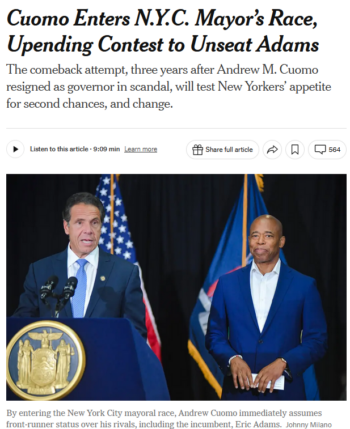
The New York Times (3/1/25) said that Cuomo “can cite his success as governor…leading the state through the Covid crisis.” In 2020, the last full year of Cuomo’s governorship, New York had the second-worst death rate from Covid in the nation.
The Times article by Nicholas Fandos and Emma Fitzsimmons, which called Cuomo’s comeback attempt “audacious,” acknowledged that his campaign came with “hefty baggage.” Yet it also pointed to his “clear advantages,” including not just $15 million in anticipated super PAC money, but “his success…leading the state through the Covid crisis”—breezily erasing a key component of that baggage.
Shockingly, the reporters didn’t mention the Covid nursing home scandal until the final paragraph of the lengthy piece—which, failing to mention the two Democrat-led reports on Cuomo’s misdeeds, suggested that the whole thing might just boil down to another Republican witch hunt:
A House Republican chairman referred Mr. Cuomo for potential prosecution after he accused him of lying about a report on nursing home deaths during the pandemic. Mr. Cuomo insists he did not lie, but rather failed to remember certain details that he later sought to correct.
Regarding the sexual harassment scandal, the paper wrote: “Mr. Cuomo has had success chipping away at the credibility of some of the harassment claims.” How so, you ask? That paragraph continued:
Last year, the Justice Department reached a civil rights settlement with the state concluding that he and his executive staff subjected at least 13 female employees to a “sexually hostile work environment.” (Mr. Cuomo was not a party to the settlement and disparaged its findings as a rehash of old information.)
If the Times wants to assert that Cuomo has chipped away the credibility of the claims, they ought to at least offer some evidence. None of the accusers have retracted their claims, though one recently dropped her case against him, explaining:
Throughout this extraordinarily painful two year case, I’ve many times believed that I’d be better off dead than endure more of his litigation abuse, which has caused extraordinary pain and expense to my family and friends. I desperately need to live my life. That’s the choice I am making today.
Cuomo immediately countersued her in response (Independent, 12/19/24).
Meanwhile, when the Times article reports that some “opponents say Mr. Cuomo is to blame for some of the very things he says he wants to fix, including the state of the city’s subways,” evidence is also called for. But in this case, the evidence would show that it’s not just a political attack, but an indisputable fact: As governor, Cuomo repeatedly raided hundreds of millions of state dollars earmarked for the city’s public transportation system—which is actually state-run—to help fill state budget holes and fund pet projects, while at the same time working to reduce taxes on corporations and the wealthy (Jacobin, 3/3/25).
Indeed, Fitzsimmons might have quoted her own reporting from 2018 (New York Times, 10/23/18):
Mr. Cuomo, a Democrat, helped create the subway crisis by failing to adequately support the system—his administration even diverted transit funding to ski resorts—and he has been pilloried by subway advocates for prioritizing aesthetics over maintenance.
‘It has been discredited’
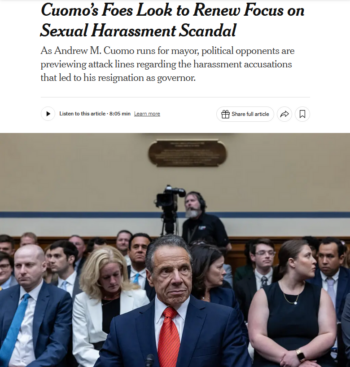
New York Times (3/1/25): “A campaign-style video on Valentine’s Day showing [Cuomo] holding a rose and hugging women…reinforced the idea that many women still like him.”
The same day (
3/1/25), the paper published another piece by Fitzsimmons, “Cuomo’s Foes Look to Renew Focus on Sexual Harassment Scandal.” The article named some of the accusations and noted that Cuomo’s “team often cites how, despite criminal investigations by several district attorneys, none resulted in charges.” It did not mention the attorney general’s investigation or the state assembly probe, leaving readers with essentially a he said/she said duel to evaluate the credibility of the claims.
Another line in that piece stood out: “The power of the #MeToo movement has seemed to wane in recent years, with the re-election of President Trump, a Republican, a visible example.” It’s worth pointing out, as the Times does not, that much of the power of that movement came from pushing news outlets to take more seriously accusations of sexual misconduct against powerful people. If the power of #MeToo has waned, journalists shouldn’t pretend they’re passive observers of the phenomenon.
Even some in the media admitted that Trump’s extensive list of accusers never got the kind of coverage they deserved, which helped smooth his path back to the White House. The Times‘ formulation erases the media’s complicity in shielding sexual harassers and abusers from facing the kind of scrutiny #MeToo demands.
#MeToo also helped the public understand that it’s incredibly hard to convict someone of sexual misconduct, which so often happens with no third-party witnesses, so that charges and conviction can’t be the only standard by which powerful people accused of such deeds are judged. If journalists shift back to reporting on such accusations strictly through the lens of the legal system, as the Times does here, it means winding back an important part of #MeToo’s impact.
Fitzsimmons returned to the subject less than two weeks later in the article “For #MeToo Movement, Mayor’s Race in New York City Poses a Test” (3/10/25). Noting that three of the mayoral candidates face sexual misconduct accusations—Cuomo, embattled incumbent Eric Adams and former city comptroller Scott Stringer—Fitzsimmons wrote that their candidacies “will provide a durability test for the #MeToo movement in New York politics.” She proceeded to lay out the accusers’ claims and the candidates responses, with this for Cuomo’s defense:
Mr. Cuomo told reporters on Sunday after attending a church service in Harlem that he did not agree with a report by the state attorney general, Letitia James, that found that he had sexually harassed 11 women.
“I said at that time it was wrong, I said at that time it was political, it has been discredited and nothing has come from any of it,” he said.
If a politician claims a report that took testimony under oath from 41 people and examined tens of thousands of documents has been “discredited”—a report your own editorial board at the time called “thorough and damning“—don’t you think you ought to press for substantiation of that eyebrow-raising claim? But New York Times editors let it stand unchallenged.
‘Criticism politically motivated’

The New York Times (3/23/25) stressed the political motivations behind pointing out that Cuomo’s Covid policies got people killed—as opposed to focusing on the people killed.
On the anniversary of Cuomo’s nursing home order, families of nursing home Covid victims held an event calling on him to apologize and take responsibility for his actions, bringing together most of Cuomo’s rivals—from the Democratic Socialist to the lone Republican in the race. The Times (3/23/25) lent its support to Cuomo’s framing of the criticism as merely politically motivated:
He has sharply defended his handling of the crisis and has called the criticism politically motivated.
On Sunday, nine mayoral candidates stood on a street in Brooklyn’s Cobble Hill neighborhood in front of a memorial wall that displayed photos of nursing home residents who died during the Covid crisis. Each candidate said that they were not attending for political reasons, while taking the opportunity to criticize the former governor, who is leading in the polls.
Reporter Hurubie Meko’s opaque explanation of the scandal likewise offered Cuomo a friendly spin, turning the established findings of multiple inquiries into yet another he said/she said dispute between Cuomo and his “critics”:
Mr. Cuomo’s critics have focused on a July 2020 state Health Department report regarding nursing homes, which they have called inaccurate and have said deflected blame for the deaths away from the governor. In 2021, New York State’s attorney general, Letitia James, found that Mr. Cuomo’s administration had undercounted coronavirus-related deaths of nursing home patients by the thousands. Mr. Cuomo, who has said the March 2020 order and the state’s other public health policies adhered to federal guidelines, called the lack of transparency a mistake but denied that his decisions were politically motivated.
It’s not just “critics” who called the numbers “inaccurate”; Meko leaves out the state assembly probe that found that, after intervention from Cuomo’s office, the nursing home death toll was edited to erase the thousands of residents who had died in hospitals. She also leaves out the difference between the CDC guidelines and Cuomo’s policy.
She does add that a “Republican-led House subcommittee…ultimately fault[ed]” Cuomo for tampering with the report, but let a Cuomo spokesperson counter that with further accusations of politicization.
‘An effective leader pre-scandal‘

New York Times Opinion writer Nicole Gelinas (10/8/24) on Cuomo: “There isn’t a better supposedly centrist alternative.”
The paper’s kid-glove treatment of Cuomo isn’t restricted to the news pages. The Times opinion editors put together a four-person discussion on “the Democratic Party and Andrew Cuomo” (3/6/25), published as a guest essay, that appeared designed primarily to shore up the barricades against any candidates to the left of the centrist Cuomo. (Most of them are; the surging challenger currently polling second is democratic socialist Zohran Mamdani.)
Joining editorial board members Mara Gay and Brent Staples were Giuliani biographer Andrew Kirtzman—whose most recent essay in the Times (10/8/24) had argued that “there’s a compelling reason [Cuomo] should run,” citing his “record of success and aura of competence”—and Nicole Gelinas, identified by the Times as “a contributing Opinion writer,” but more helpfully described as a senior fellow at the right-wing Manhattan Institute. (“Contributing Opinion writer” is a new position for Gelinas; apparently the Times felt her weekly column at the New York Post was not enough local exposure for her point of view.)
Gay asked the questions, while Gelinas offered claims like “voters aren’t interested right now in progressivism.” Kirtzman similarly opined, “New Yorkers in particular prefer their mayors to be pragmatists” rather than progressives. (This is the Times‘ line in news reporting as well, as when Fandos and Fitzsimmons—3/1/25—reported, “Democrats have been drifting slowly back toward the ideological center, where Mr. Cuomo has long been at home.”)
Staples offered nothing to counter those takes, and responded to Gay’s question about masculinity by suggesting that any breakout challenger to Cuomo or Adams would “have to give good bomber-jacket vibe,” presumably referring to Cuomo’s habit of wearing a leather bomber jacket in public appearances during the pandemic.
Kirtzman also presented a rehash of his October take, submitting that “the indisputable fact is that as governor [Cuomo] accomplished major things that his predecessors could not,” and that he “has been able to capitalize on the credibility he built up as an effective leader pre-scandal.”
Gelinas continued to hammer on the importance of centrism, saying that if New York City votes for Cuomo, “it won’t be because of ignorance of [his scandals], but because they feel there isn’t a better supposedly centrist alternative.”
Right now, polling shows that most people simply don’t know enough about the other mayoral candidates to have an opinion about them, but of those that do, they give three of his five closest challengers higher net approval ratings than Cuomo.
And in terms of what New York voters want, it’s far from clear that centrism wins the day. The consistent top issues for New Yorkers are affordability—particularly housing—and safety. “Affordability” for New Yorkers is largely about housing costs, and the fact that real estate money has been pouring into Cuomo’s campaign bodes poorly for his ability to bring those costs down. “Safety” is driven primarily by fearmongering media coverage that rarely acknowledges that crime is actually near historic lows (FAIR.org, 7/25/24), but there is a visible mental health and homelessness crisis that also spurs fear and concern among residents.
As the Times itself (1/12/16) reported years ago, Cuomo worsened the city’s homelessness crisis as part of his commitment to fiscal austerity. Rather than raising taxes on the wealthy, he canceled the city’s access to a federal housing assistance program in 2011, costing the city nearly $100 million in funds and growing the city’s unhoused population by 16,000 in the next three years. Cuomo also sharply reduced the number of state-run psychiatric beds, shifting more of the seriously mentally ill population back onto the streets and subways.
Screwed over NYC

Politico (3/22/25) examines Cuomo’s “ties to a person loathed by many Democrats”—Elon Musk.
That’s far from the only stain on Cuomo’s record that the Times has reported on in the past but now seems to have conveniently forgotten. For instance, New York City is desperate for an alternative to their hopelessly corrupt current mayor, but Cuomo has his own history of corruption. During his time as governor, Cuomo established an anti-corruption commission, and then proceeded to impede any of its investigations that implicated him (New York Times, 7/23/14).
And Cuomo’s “Buffalo Billion” project, meant to revitalize the post-industrial western New York city by funneling tax breaks and state grants to economic development projects, quickly became “one of the most sweeping corruption scandals to ever rock a New York governor’s office”—including a massive giveaway to Elon Musk and his family for promised jobs that never fully materialized (Politico, 3/22/25).
But it’s no surprise the Times engages in selective amnesia over Cuomo, as New York City’s centrist neoliberal paper has a natural affinity for the centrist neoliberal politician. Cuomo’s barely a Democrat: As governor, he spent years supporting a posse of turncoat Democratic state legislators who caucused with the Republicans, to allow the minority party to block progressive legislation Cuomo didn’t want to see cross his desk (New Republic, 5/12/17).
He cut pensions for government workers, withheld hundreds of millions of dollars of school funding, and cut Medicaid in the midst of the pandemic.
He also specifically screwed over New York City, even aside from robbing city public transportation funds. In 2019, Cuomo singled out the city for a reduction in the standard state reimbursement for the local health department, so that New York City gets proportionally less than every other municipality in the state—costing the city up to $90 million a year (HealthBeat, 2/27/25). And he tried to cut a third of the state’s funding for the city’s public university system, which would have devastated it (Jacobin, 3/3/25).
‘Withering criticism’
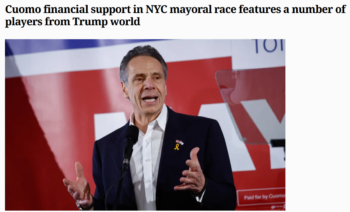
The Daily News (3/22/25) examined Cuomo’s reluctance to criticize Trump—and the backing he gets from wealthy Trump supporters.
Another major local paper, the New York Daily News, has prominently included straightforward descriptions of Cuomo’s scandals in its coverage. In its article (3/1/25) on Cuomo’s entrance to the race, for instance, it explained:
He resigned as governor in 2021 after being accused of sexually harassing 13 women, allegations the US Department of Justice’s Civil Rights Division corroborated in a bombshell settlement last year. Cuomo has denied ever committing misconduct, but said upon resigning that he wanted to “deeply apologize” for making “people feel uncomfortable.”
Cuomo has also for years faced withering criticism over his decision to understate the number of New Yorkers who died from Covid-19 in nursing homes in the state after he enacted a policy in early 2020 prohibiting such facilities from denying entry for residents diagnosed with the deadly virus.
And under the print-edition headline “Cuomo Goes Easy on the President” (3/22/25), the paper covered Cuomo’s reluctance to criticize Trump in light of donation records they dug up showing tens of thousands of campaign dollars coming from wealthy “Trump donors and associates.” The Times has done no such digging.
Meanwhile, the Murdoch-owned New York Post seems happy to aim its disinformation machine at Cuomo. Reporting on the same nursing home anniversary event as the Times, the Post (3/23/25) wrote that Cuomo’s nursing home directive “by many estimates resulted in the deaths of about 15,000 nursing-home residents.” FAIR is aware of no credible estimates that Cuomo’s directive killed 15,000, as that is the total nursing home death toll. Even Cuomo’s most vocal critics—those with any respect for truth and facts, anyway—don’t claim his order was responsible for every single nursing home death.
‘Strong ethical standards’

The Hill (3/8/25) presented Cuomo as an alternative to Mayor Eric Adams, someone who can tout “his leadership bona fides as Adams finds himself mired in controversy.”
While the Times‘ local competitors aren’t pulling their punches, its Cuomo-friendly reporting is finding some company among national outlets.
The Hill (3/8/25), in what read as a puff piece about Cuomo’s campaign to “woo centrists,” didn’t mention his nursing home or sexual harassment scandals until the 27th paragraph—a curious choice, especially considering that the 10th paragraph of the piece cited a poll that found city voters’ top priority was “strong ethical standards.” The Hill framed only Adams as the one “facing the major stumbling block of ethical questions.”
Politico‘s report (3/1/25) on Cuomo’s entrance to the race seemed determined to absolve him of his misdeeds, cherry-picking evidence to paint a picture of innocence:
Like Trump, Cuomo’s return to electoral office seemed improbable nearly four years ago when he left the governor’s mansion amid cascading scandals.
Still, the former governor’s allies believe he’s been vindicated in the years since he left office. One of the women who accused Cuomo of wrongdoing dropped her sexual harassment lawsuit against him and several prosecutors have declined to bring charges against him. A Justice Department inspector general last year determined the federal government’s probe of Cuomo’s nursing home policies launched under the first Trump administration was politically motivated.
In a piece critical of Democratic Party support for Cuomo, the Atlantic‘s David Graham (3/3/25) wrote, “If, in order to curb the far left, Democrats like [Rep. Ritchie] Torres are willing to embrace an alleged sex pest who tried to cover up seniors’ deaths, is it worth it?”
The same might be asked of some in the corporate media, with the New York Times at the top of the list.
You can send a message to the New York Times at letters@nytimes.com or via Bluesky: @NYTimes.com. Please remember that respectful communication is the most effective. Feel free to leave a copy of your message in the comments thread here.
This post was originally published on FAIR.

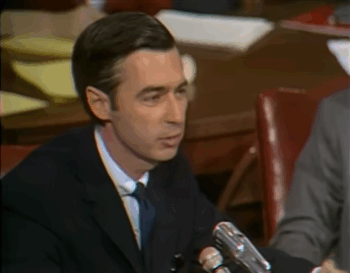
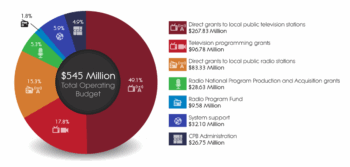





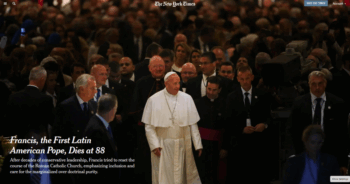
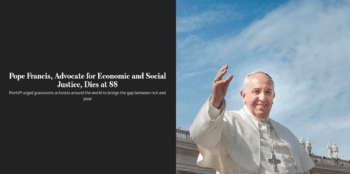











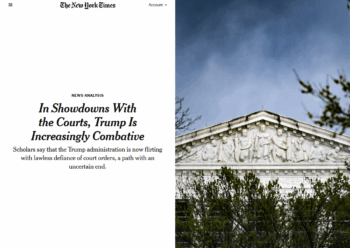







 Big Oil tries its hardest to influence ministries responsible for climate action. The federal ministries most frequently targeted by lobbyists were Natural Resources Canada, Environment and Climate Change Canada, the Privy Council Office and Finance Canada.
Big Oil tries its hardest to influence ministries responsible for climate action. The federal ministries most frequently targeted by lobbyists were Natural Resources Canada, Environment and Climate Change Canada, the Privy Council Office and Finance Canada. 









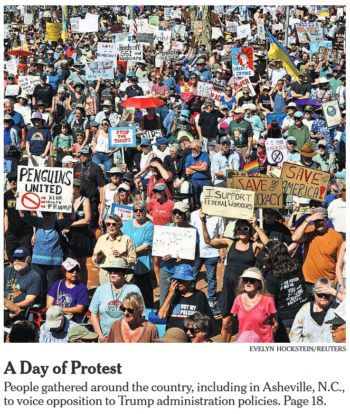



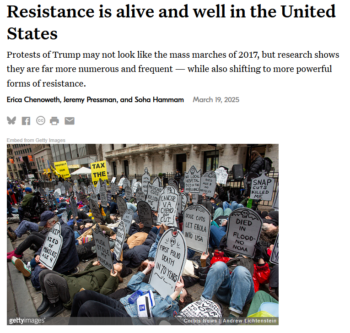
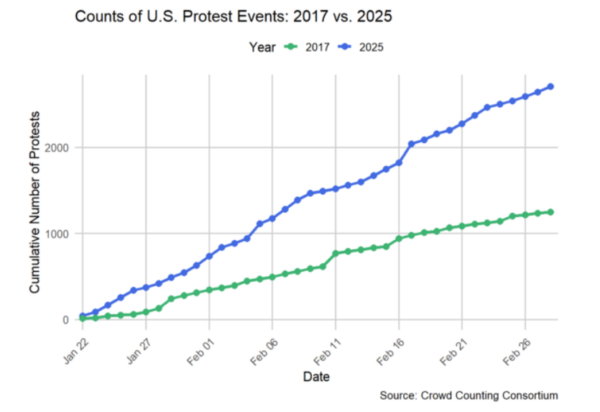

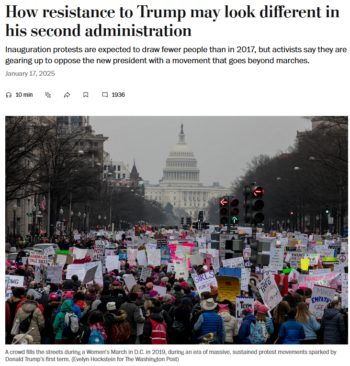

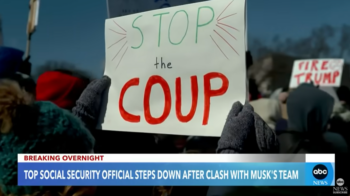









 A clip from Minister Wilkinson’s letter in response to oil and gas CEOs.
A clip from Minister Wilkinson’s letter in response to oil and gas CEOs.


